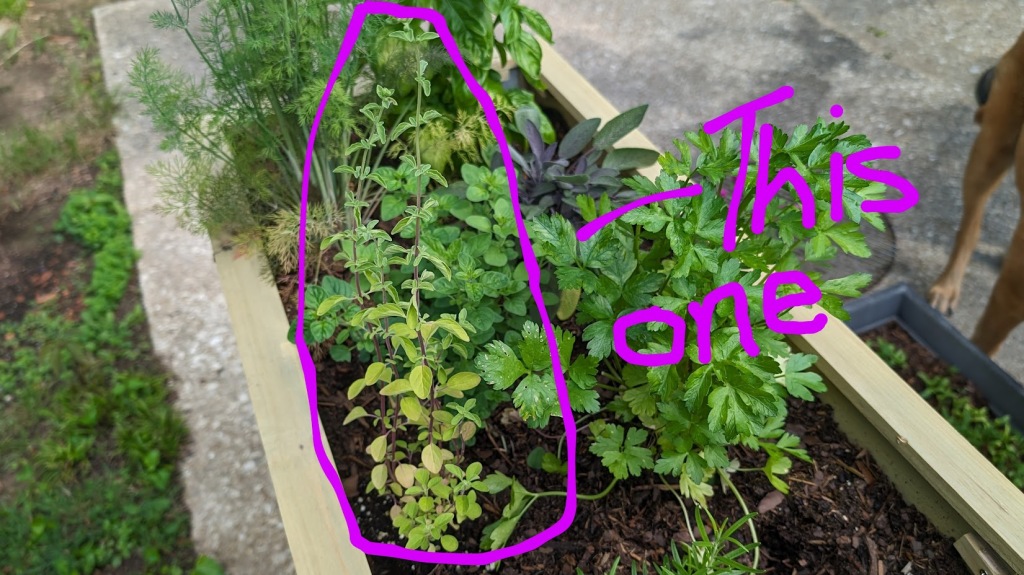
I want to get a better sense of marjoram. I’m moderately familiar with it but only just begun spelling it with an “a” instead of a “u” if that gives you a sense of where I am. I’ve used dried and been – not underwhelmed. Underwhelmed would imply that I could pick it out at all. It didn’t distinguish itself from other herbs I was using.
It’s often confused with oregano and I’ve used it, again dried, in its place but that was as part of a larger recipe. The difference is that oregano gets it’s aroma from an oil containing the antioxidant called carvacrol and an antitoxin called thymol while marjoram smells as it does because it was handled by Aphrodite. Now my wife has a plant; a Mother’s Day gift from me in the tradition of my kids’ (when they were younger) “Let’s get something we can do together!” attempts to highjack other people’s present receiving.
I want to use it in the sauce I posted for pork Milanese (recipe here) in place of thyme. I’ll hold out bay leaf too just to be sure I know what I’m tasting. The issue is that I know nothing about the plant. As you can see it looks spindly. I don’t know if it is. When I search for images I see big bushy things, but does that means my plant is lesser or do people who aren’t me only post pictures of blue-ribbon plants?
I want to pick a few leaves for dinner but in its state am I stunting future growth? This ends with me obsessing. So far, I’ve learned that Shakespeare called it “the herb of grace” but Elizabethans were more likely to call oregano marjoram than to have real marjoram and St. Hildegarde thought it caused leprosy.
Should I harvest now or wait until the plant has filled out, assuming this is a plant that will fill out?
